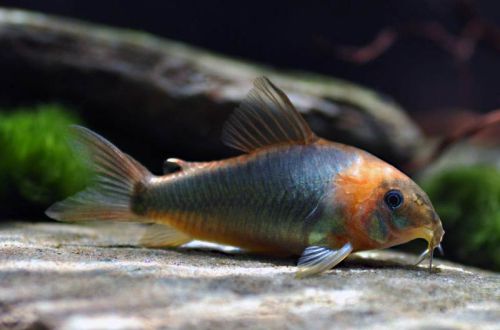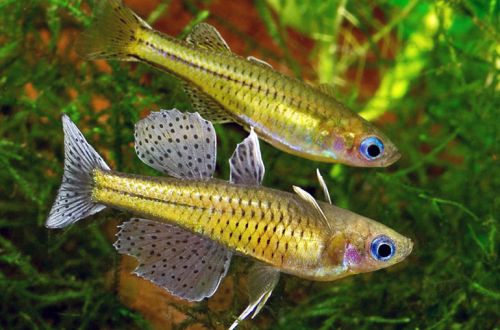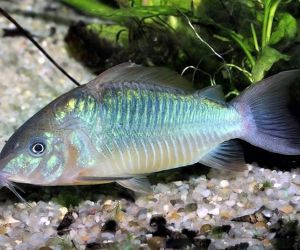
Corydoras Knight
Corydoras knight, the scientific name Corydoras eques, belongs to the family Callichthyidae (Shelled or callicht catfishes). The Latin word eques translates as “knight” or “rider”, indicating the peculiarity of the color pattern of the body of this fish. It is understood that the catfish resembles a knight’s horse, clad in armor (dark parts) with a harness (light stripes).

Comes from South America. The exact habitat is not known and is defined as the “Upper Amazon”. Difficulties are caused by the fact that similar corridors have been found in the western states of Brazil and Peru, which have not yet received a scientific description and are listed in the catalogs as CW007 and CW043. If they are recognized as Corydoras-knights, then the habitat will be expanded, otherwise it will be narrowed.
Contents
Description
Adult individuals reach a length of 4–5 cm. The intensity of body color depends on the substrate. The darker, the more contrast the body pattern. Dark parts of the body may reflect turquoise or blue hues. An orange stripe runs on the head behind the gill cover and along the back. The fins also have “red” colors.
Brief information:
- The volume of the aquarium is 60-80 liters.
- Temperature – 20-26°C
- Value pH — 6.0–8.0
- Water hardness – soft to medium hard (1-15 dGH)
- Substrate type – sand or gravel
- Lighting – moderate or bright
- Brackish water – no
- Water movement – light or moderate
- The size of the fish is 4–5 cm.
- Food – any sinking food
- Temperament – peaceful
- Keeping in a group of 4-6 fish
Maintenance and care
Maintaining an aquarium with Corydoras Knights is no different than maintaining most other freshwater fish species. It is necessary to provide clean warm water with suitable hydrochemical values for a particular species and to prevent the accumulation of organic waste that can upset the biological balance in the aquarium. Design requirements are minimal, it is enough to provide soft ground where the catfish could dig, and a few shelters at the bottom. However, it is worth remembering the color of the substrate, as already mentioned above. It is advisable to use dark soil.
Food. Like any other fish, catfish need a balanced diet, but the composition of the food does not matter much. For example, the daily diet may consist only of dry sinking food, provided that it is made by reputable manufacturers. There are special series of food for corridors.
behavior and compatibility. Considered a good companion for many popular aquarium fish. They are peaceful and can get along even with not too friendly species due to their reliable “armor”. Despite this, it is still not worth settling together with aggressive and territorial fish.





